
If you lived in Toronto in the fall of 1918, you probably had a great sense of hope for a better future. The Great War to end all Wars seemed to be coming to an end. The Allied forces, including Canadian battalions, were sweeping back Germans along the Western Front.

Yet the men in the trenches were worn out. Casualties, both dead and wounded, were still high. The country was split over conscription and recruitment and training were ongoing. Men packed into military camps and aboard troop ships to Europe just as returning soldiers, mostly wounded, packed ships heading home.

Conditions for civilians “Over There” were horrendous as refugees tramped the roads, families cowered in basements and starvation stalked the towns and countryside.

And rumours of a new mystery illness had been appearing in letters from overseas and in the newspapers since the previous winter. China was diving into an epidemic and sick soldiers were beginning to die — Americans, British, Canadians, Australians, Indians, Africans, Russians, Germans, Austrians, Italians. The new illness seemed to be a form of the flu that once it took hold often progressed to a deadly pneumonia in an age without antivirals or antibiotics.


In Toronto, cases of pneumonia began to appear here and there in the papers. Often the victims were young and healthy with no preexisting conditions. These cases were not yet identified as influenza. But those who read the paper knew something dark was on the horizon. The military would be the vector, flu’s main line across the globe and to Toronto.





In mid September cases of influenza began to appear among the Polish soldiers at the Canadian Military training camp at Niagara-on-the-Lake. “Lieut.-Col. Le Pan does not anticipate any serious results from the epidemic.” Authorities seem to take the deaths of Josef Zabezyk and Kazinners Kolonaki, both Polish Americans, the first deaths, lightly. But were officials simply trying to reassure the public? This was wartime and the army authorities knew full well what was going on in Europe. Propaganda was “part and parcel” of war.


A week later the flu was in Toronto, but no deaths had yet been identified. Chief Medical Officer of Health, Dr. Charles Hastings, offered guidelines to help prevent infection and spread of the new illness. Some are familiar to us 103 years later: avoid crowds, wash your hands, get outside (breathe pure air). Others seem downright weird: breath through your nose, chew your food well, “don’t let the waste products of digestion accumulate” (don’t be full of shit), avoid tight shoes. But the Pandemic of 2020-2022 offers advice just as useless and more dangerous: inject yourself with chlorine bleach, take pills vets prescribe for cows and horses, don’t get the COVID vaccine, diagnose and prescribe for yourself and your family, etc.


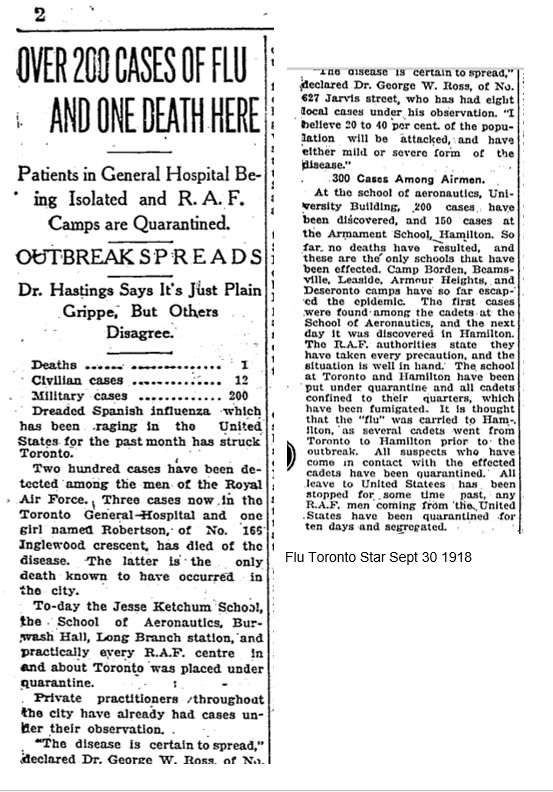
By September, Toronto had its first official flu death. Some schools were in quarantine as were some military centres in the city. Dr. George W. Ross was prescient.
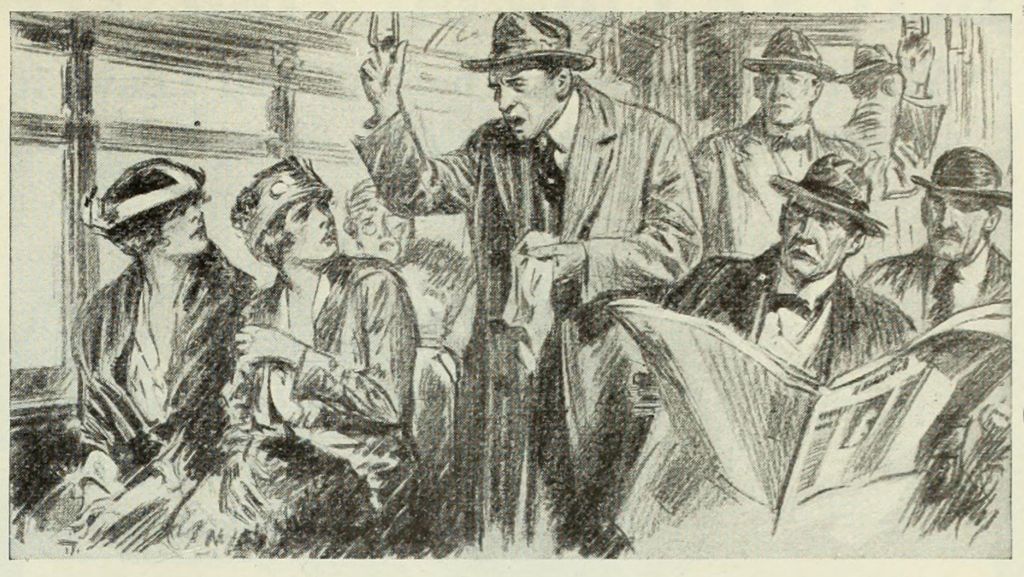
People tried everything they could think of including cough drops to prevent getting the flu. They opened windows on streetcars and in homes, but dark jokes began to spread.
We opened the winda
And in flu Enza.
Masks were initially not recommended and then medical recommended them and soon political authorities mandated them. And some resisted.
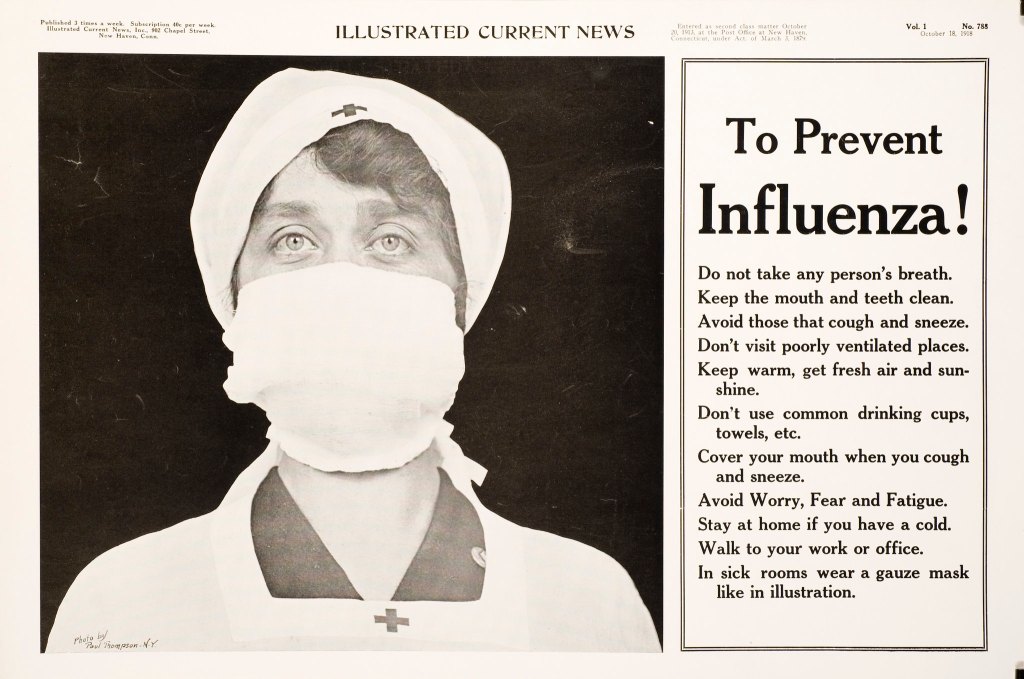


Growth was exponential as Toronto entered the October from Hell.


October 12, 1918 Toronto’s Day from Hell
By October 12, the hospitals were triaging, turning away patients they thought might have a chance of survival or just accepting patients on a first-come-first-served basis. Doctors and nurses were not seeing those we would think would be least likely to survive: elderly, frail people and young children and infants. Those who were dying were, overwhelmingly, young and healthy men and women, in all neighbourhoods including older areas in the East End such as Riverside, Leslieville and Todmorden and new neighbourhoods spreading across the farm fields of the Ashbridges, Charles Coxwell Small, the Sammons, Cosburns and others. Even the new cottage communities along the Beach were not spared.
October 12, 1918, Toronto’s Day from Hell, began.


Like now, there simply were not enough trained and qualified doctors, nurses and other staff to care for the seriously ill. Voluntary in this case did not mean unpaid. Those doing the hands-on work of cleaning, feeding, and caring were then and now paid low wages and themselves falling prey to the Pandemic of their time.


A temporary lockdown began.


Dr. Hastings arranged for supplies and beds for overflow facilities. Big business began to move to combat the Pandemic.


Even the deeply religious no longer relied on prayer alone.
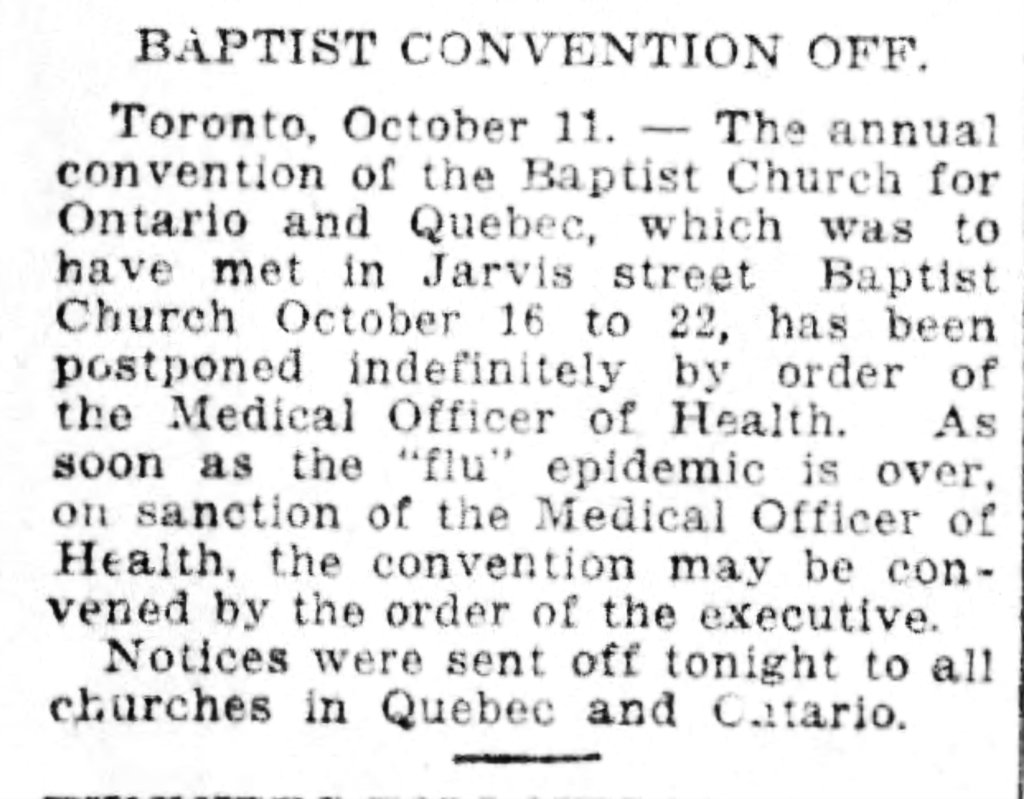

This man kept Thanksgiving by travelling to Toronto and playing billiards on arrival. He read the newspapers…and caught a chill.


More emergency measures put in places and more volunteers called for.


People began confronting those who refused to wear masks in public.

A vaccine was available at the Mayo Clinic in Rochester, Minnesota. Dr. Mayo wasn’t sure if his jab would work for everyone and seemed unaware of side effects when he said, “We are not absolutely sure, except that we know the inoculation can do no harm.” Facilities couldn’t make it fast enough to give everyone the vaccine, but Dr. William James Mayo downplayed the flu, reassuring those who couldn’t get it or couldn’t afford it. Dr. Michael Mayo treats COVID patients today.

Dr. William James Mayo, Mayo Institution (now called the Mayo Clinic) 
Dr. Michael Mayo, The Mayo Clinic, 2021

You could buy insurance against influenza, but how high were the premiums?


People quickly came up with new and supposedly improved masks.
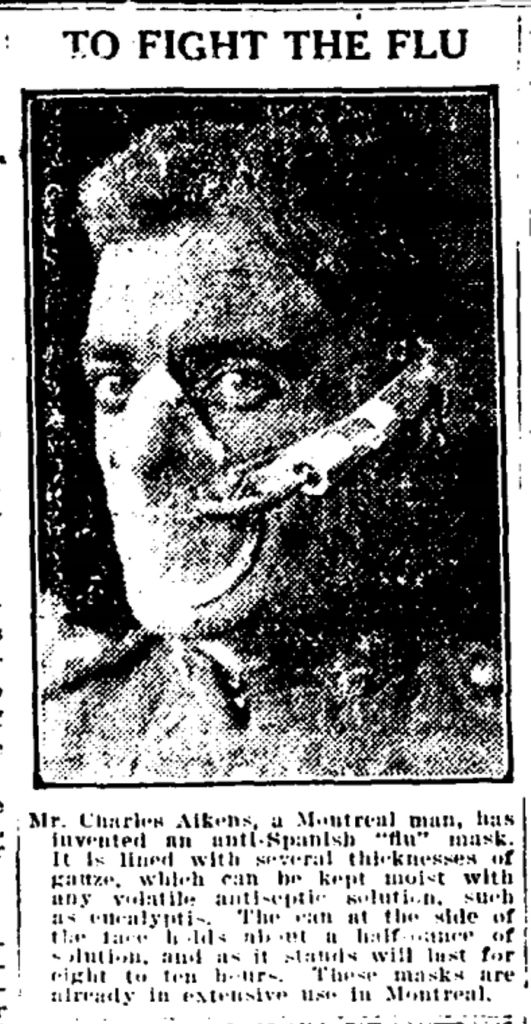

And the numbers continued to rise, but, like now, statistics were hard to gather. But arrangements could be made for free delivery of free sup0plies to the home.

Quack cures and fake news abounded, mostly by word-of-mouth. Although the main stream media accepted ads like this, reporters were careful to adhere to the journalistic standards of the day. By and large, their stories were accurate.

A lot of people repurposed their Ultra-Violet home machines in 2020-2021. They bought them to disinfect the tubing, parts and masks of their CPAP machines safely and quickly. But many CPAP machines were also repurposed to become ventilators with new computer chips and the addition of oxygen.


They believed the First Wave had crested and November would be better.














